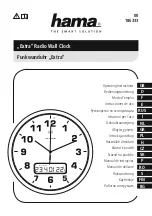
117
Location-Based (GPS) Scanning
Location-Based (GPS) Scanning
The BCD996T can make use of data transmitted from an attached GPS unit that
lets the radio automatically enable and disable systems based on the geographic
information you provide such as:
• Latitude (the center of the range)
• Longitude (center of the range)
• Range (the radius of a circle around the latitude and longitude coordinates
selected from .5, 1, 3, 5, 10, 20, 30, and 50 miles.
You set the longitude and latitude to approximate the center of a geographic entity
such as your local city and set the range to encircle that center point. By doing so
you set aside reception of an adjacent city that otherwise might be undesirably
received from one extremity of your city.
In addition, all geopolitical areas are not perfect circles. Therefore you can
accommodate these variations by entering multiple sites for the system, eve
though the system actually has one site, and use different location settings for
each of those additional sites.
See the programming section for specific steps required to apply location data to a
radio system.
GPS Compatibility
The GPS must have serial output, and be capable of outputting standard NMEA
sentences GGA and RMC. (See “NMEA-0183 ver.3.01” which can be found on the
web.) Be sure to set the GPS to output NMEA.
Connecting Your Scanner to a GPS Device
To use the Location Based features of the scanner, you must connect a GPS to the
unit. Use the cable provided by the GPS manufacturer. Make sure that their cable
terminates in a female, 9-pin serial connector. Insert that plug into the male, 9-pin
socket on the back of the scanner labeled
REMOTE/GPS
. Once the GPS is
connected, refer to the sections dealing with inputting selections to enable
Location Based feature operation.
Initial GPS Operation
When the scanner first starts receiving a signal from the GPS, it briefly displays
GPS Connected
and silently locks and unlocks all radio sites according to your
UB335ZH.book Page 117 Friday, March 17, 2006 4:35 PM
















































